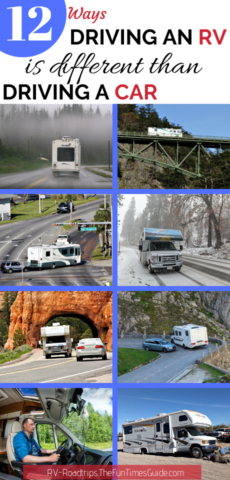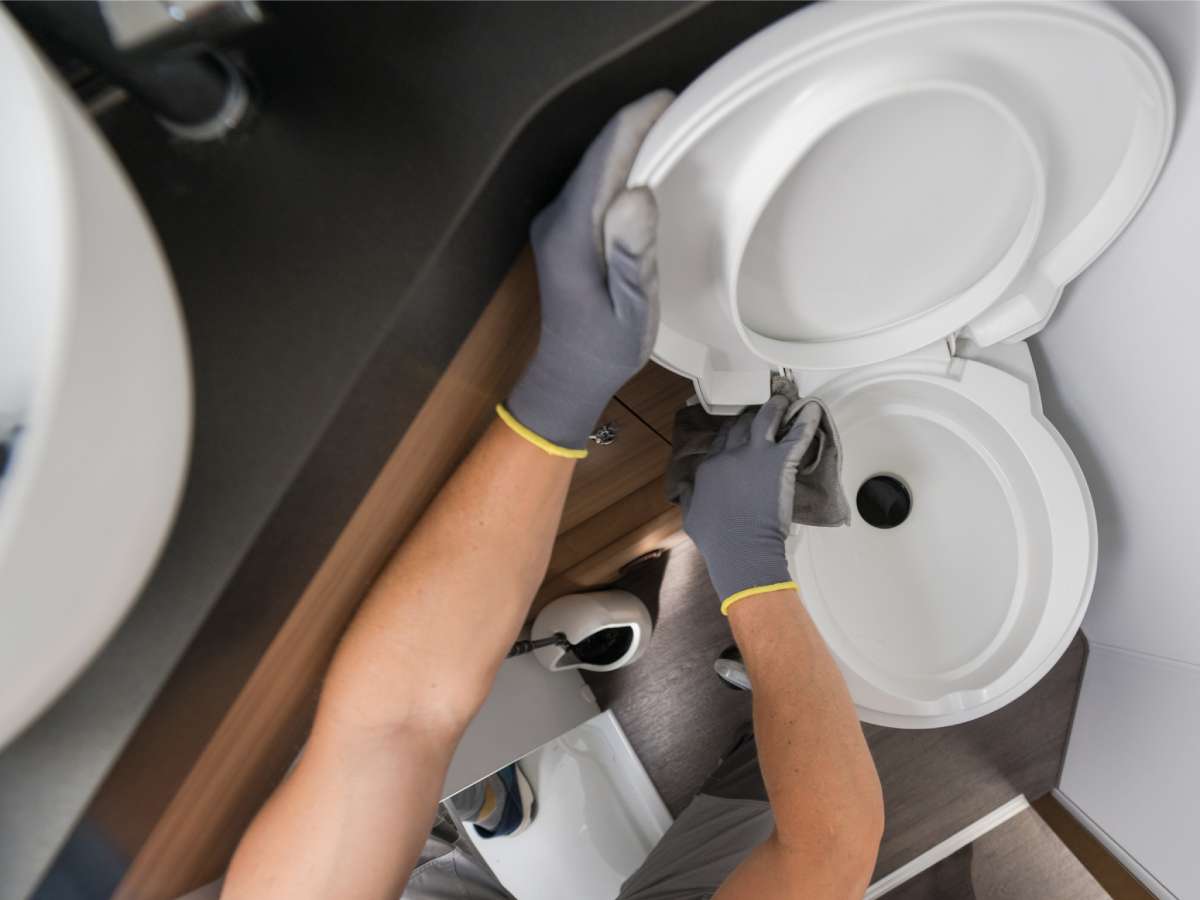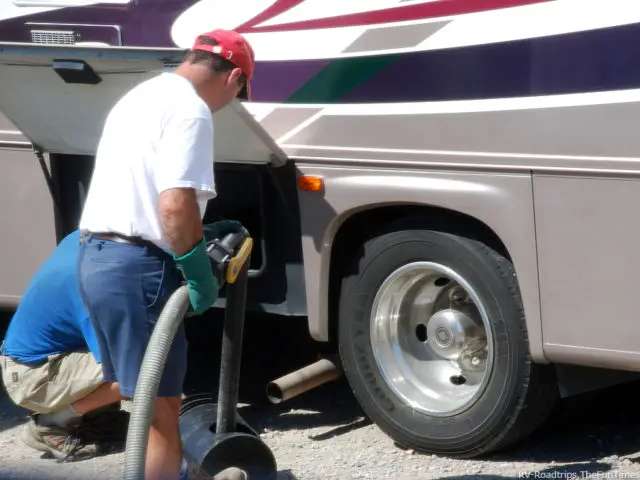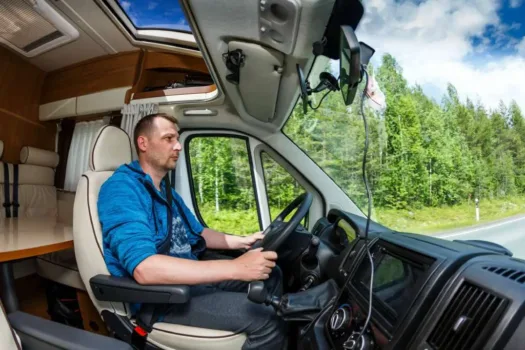
Do you need a special license to drive an RV in the United States? No.
Do you need to attend RV driving school before you can drive an RV? No.
However… if your driving experience is limited to the family sedan, then setting off in an RV of any style or size is going to be a whole new experience for you!
I’m a full-time RVer, and I can honestly tell you that driving an RV is different from driving a car — in terms of how the vehicle is going to respond to various road conditions.
There’s a lot to learn before you rent an RV… or buy one!
Yes, attending an RV driving school would definitely be helpful, but it’s not required. Simply having a good understanding of how RVs handle in each of the following 12 scenarios will go a long way.
This guide will help you address tricky RV driving situations before you find yourself in a panic when things go wrong behind the wheel of the RV.
RV Driving Situations You Need To Be Prepared For
Some road conditions are experienced differently — depending on the type of RV you’re driving.
The driving tips below will be addressed from the viewpoint of sitting behind the wheel in these types of RVs:
- Motorhomes
- Travel Trailers & Fifth-Wheel Trailers
…with unique strategies listed for each one individually, as necessary.
#1 – Fog
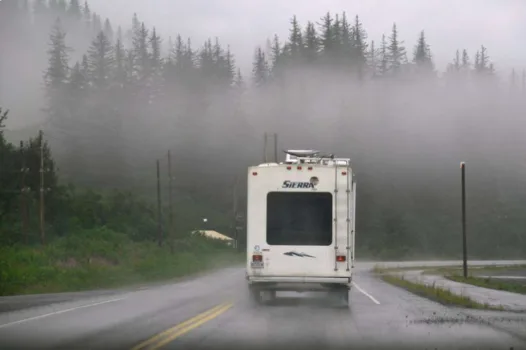
Motorhomes generally have good responsive brakes, making stopping comparable to a car — except that it will take extra distance to stop safely. So, when you’re driving a motorhome in the fog, be sure to increase your space between the other traffic to allow for safe stopping. Driving within the distance that your headlights provide a clear view may not be enough stopping distance!
RV trailers usually have electric brakes. They can be effective if adjusted correctly. You need adequate brake friction — so that when you touch the brake pedal lights (enough to illuminate the brake lights) the trailer will start to slow you down. It’s a balancing act for adjustment — because you want the trailer brakes to assist with stopping, but you don’t want the wheels to skid. That’s why you need to adjust your distance between traffic — so you will have plenty of time for the electric brakes to engage and slow you down.
All RV types need additional space to slow when braking, compared to a car!
#2 – Rain & Wet Roads
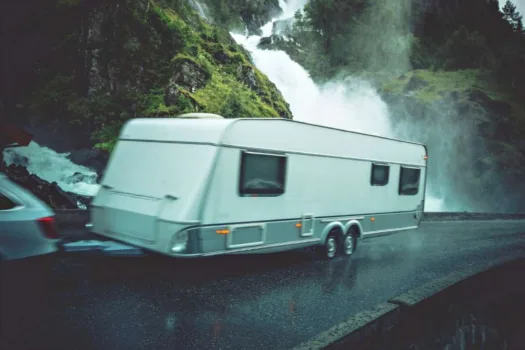
Hydroplaning can be a serious issue for RVers.
An Example: Once, while towing a long fifth wheel trailer, I was going up a slow grade hill in Texas in a light rain. Down south, oil residue builds up on the highways and when the rain starts the roads can become very slick. With my truck’s cruise control set, I noticed the RPM started to climb unexpectedly. My rear wheels had lost traction to the highway and were spinning faster than I was actually driving.
Hydroplaning is more of an issue with RVs than cars because:
- You have more tires contacting the road, which means more possibilities for skidding.
- Larger tires on RVs are more susceptible to hydroplaning than smaller car tires.
#3 – Snow And Ice
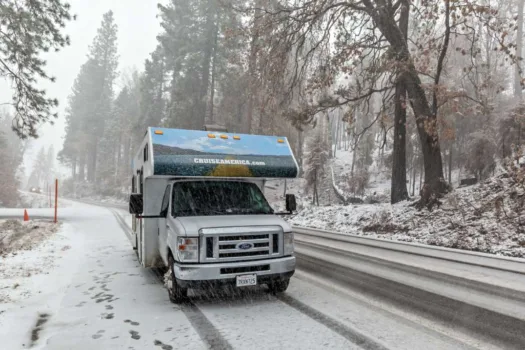
Motorhomes are more likely to get sucked into a ditch when driving through accumulating snow or ice. The instant one of the front wheels leaves solid pavement, a larger vehicle like an RV will break loose and head off the road. Once you’re headed into the weeds, it’s unlikely that you will be able to recover and stay on the road.
RV trailers are susceptible to jack-knifing — especially if the electric brakes are over-sensitive or ineffective. (As I’ve already mentioned, it’s a balancing act adjusting electric trailer brakes.) If your truck slides, the trailer will push it forward — causing you to lose control. The best key for success is to slow down, or get off the road completely until the weather conditions improve.
Slow down whenever you’re driving an RV in the snow or on the ice!
#4 – Going Uphill
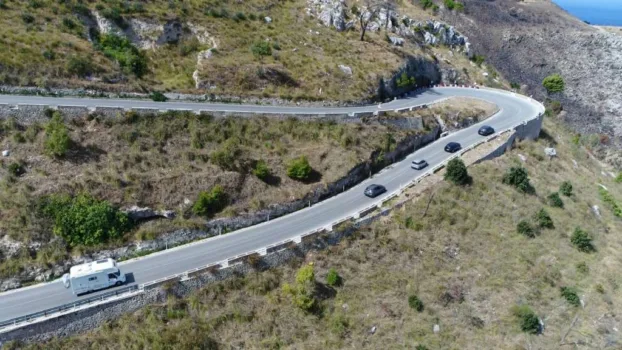
Unlike cars, the idea that you can remain on cruise control while climbing most hills is near impossible with RVs. Also, the notion of maintaining normal cruising speed is unlikely. Long uphill pulls require that you drop down to lower gears.
Whether you have automatic transmission (or as in many pickup trucks, a manual transmission), you will need to downshift 1 or 2 gears to make the grade.
Deciding which gear you need to use is determined by the load on your RV. Find the comfort zone for the engine and adjust your speed — so you’re not over-revving or lugging the engine.
#5 – Going Downhill
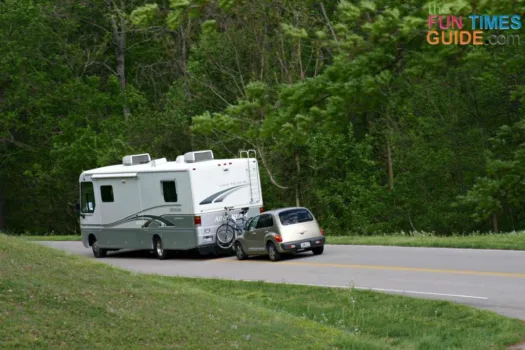
Many motorhomes (and especially pickup trucks) have a “hold back” or “slowing” feature within their automatic transmissions. When driving in the Tow/Haul mode… once you tap the breaks on a downhill grade, the transmission will downshift and hold you back to some degree. This will allow you to descend a long grade without constantly using the brakes.
Large diesel motorhomes generally have engine brakes. Either an “exhaust brake” (which closes off a portion of the exhaust, causing the coach to slow down) or a “jake brake” (which basically turns the engine into an air compressor, slowing you even more effectively than an exhaust brake).
Manual pickup trucks will require you to do the downshifting yourself. This needs to be done just as you start your long descent — because you may not be able to change gears if you get going too fast.
#6 – Gravel Or Loose Rocks
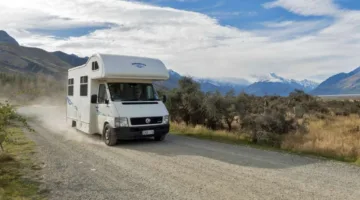
Don’t be the thoughtless driver in the big rig that sends rocks flying up behind you.
The bigger the RV, the farther the rocks will fly with more velocity.
Slow down for traffic behind you — to avoid taking out the other guy’s windshield.
#7 – Mud And Sand
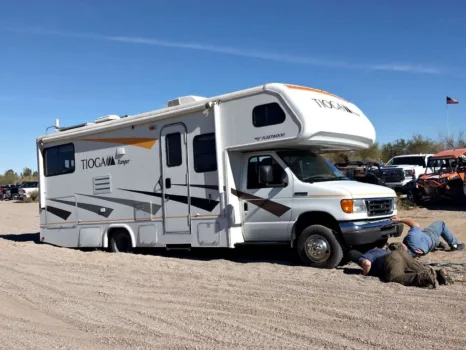
The best answer to “How do you drive an RV on mud?” is…
You do not want to go there!
RVs of all types will get seriously stuck in the blink of an eye when trying to deal with mud. The same is true for driving in sand.
RVs are meant to travel on solid, firm road conditions. This reinforces the need to get out and walk the ground of any questionable campsite, backroad, or uncharted byway before you point your nose down that way.
Remember… unlike a car, you can’t scissor back and forth to get turned around. Once committed, you either find a large space to turn around or you back out the way you came in!
#8 – Twisty Roads & Low Bridges Or Arches
Be sure to watch for signs and heed any warnings regarding length limits and height limits on scenic byways and highways that are marked as Alt Routes. Some roads are simply not built to accommodate longer vehicles (or taller ones).
- Your RV’s length matter the most on narrow, twisty roads — especially when oncoming cars are likely.
- Your RV’s height matters the most when driving under low bridges and arches — especially when there’s nowhere to easily turn around an RV.
Not far from where I’m located, there’s a highway that’s limited to only vehicles under 45 feet. Many travel trailers and fifth wheel rigs (with the tow vehicle included) exceed these limits!
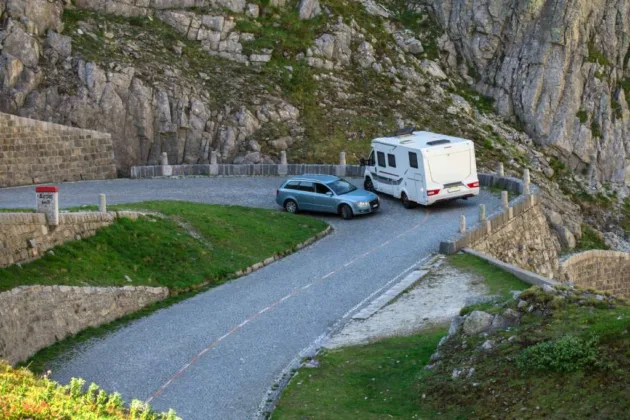
Secondary roads may also have low bridges and archways to contend with.
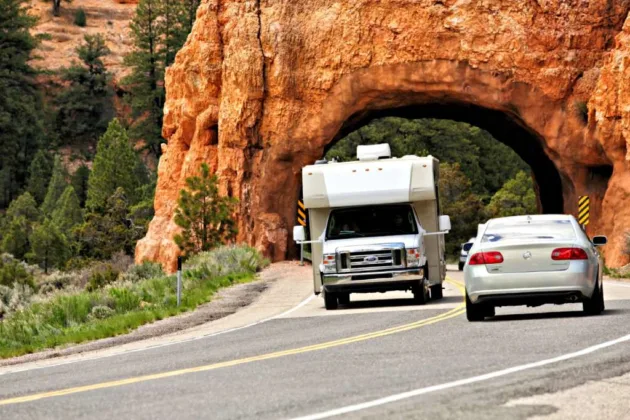
Always know exactly how high your RV is (and how long it is) and be aware of what’s ahead of you!
Here’s what you need to know about bridge height and RV height… and the law.
#9 – Windy Conditions & High Bridges
Most RVs are considered “high profile vehicles”.
Any vehicle that has a large surface area that can be exposed to cross winds is a high profile vehicle. In high wind situations, alerts will be addressed to high profile vehicles because the class is prone to rolling over and rapid lane travel. The risk to drivers is dependent on the weight, wind speed, and center of gravity of the vehicle.
— Source
Crosswinds can easily flip an RV travel trailer on its side or cause a large motorhome to drift off the road and overturn.
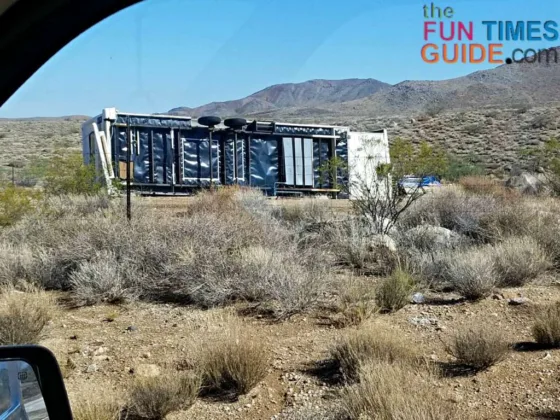
Also, high bridges can be downright spooky to cross in an RV when there are strong crosswinds! In my experience, the Mackinac Bridge in northern Michigan is a good example.
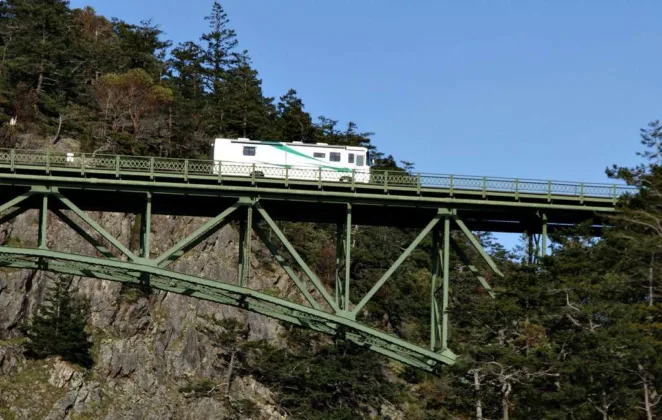
The secret to surviving high winds when driving an RV is to slow down — and in some cases (under extreme conditions), just stop and get off the road ASAP.
When seeking shelter in high winds, always park with your nose pointed into the wind, and if plausible lower your stabilizer jacks or hydraulic jacks to stabilize the RV further.
It’s best to stay safe and wait for the wind to subside — even if it’s a day or so later.
#10 – Heavy Traffic
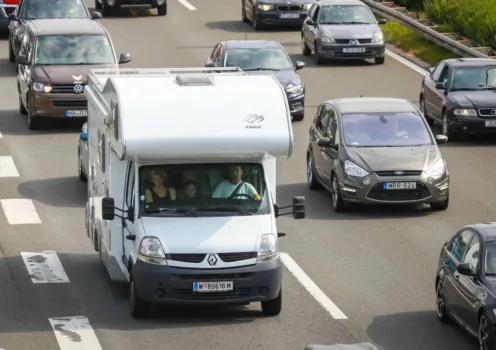
Behind the wheel of an RV is not the time to get impatient.
If the traffic you’re in is more like a parking lot… Don’t be rushed. Know your route. And leave plenty of space for maneuvering your RV if necessary.
Unlike driving a car, it will be more difficult to change lanes or redirect yourself around a tight spot.
You may want to stay in the right lane — to facilitate egress from the highway.
#11 – Backing Up And Using The Side Mirrors
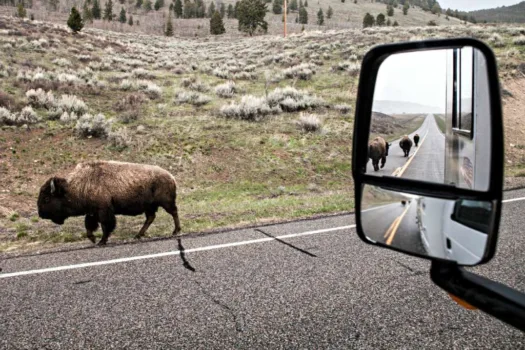
This is one of the most critical differences between driving a car and driving an RV:
- In a car… you can look at the rearview mirror in the center of the windshield and see what’s behind you.
- In an RV… situation awareness depends on your ability to use the side mirrors on your RV.
Backing up, changing lanes, and turning corners all require you to use your side mirrors — to see what’s happening as you accomplish the maneuver.
Every step of the way, you need to be watching:
- What’s going on in front of your RV
- What’s happening on both sides of the vehicle
…all at the same time!
Situation awareness means that you are mentally keeping track of what’s going on 360 degrees around you! One of the places you’ll utilize this skill the most is at gas stations — where there are lots of other vehicles and people walking about, in addition to narrow lanes and other obstacles.
Plus, when driving an RV on the open highway, you must always be aware if someone is behind you (especially if there are also vehicles in front of you).
#12 – Turning And Maneuvering Corners
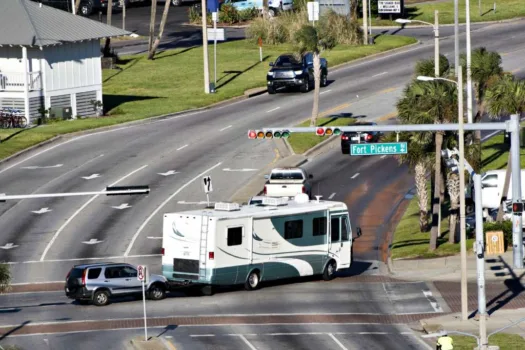
Motorhomes require special attention when turning corners at an intersection.
You’ll need to pull further into the intersection before you initiate your turn than you would typically do in a car. Longer RVs require more space to make the corner without running up onto the curb (or worse). Many large motorhomes actually have the front wheels set back behind the driver — making driving into the intersection before turning even more pronounced. Side mirrors will help you see when the rear of your motorhome has cleared the corner safely.
Travel trailers also require giving yourself additional swing room by pulling further out into the intersection before turning.
This can be complicated by not being able to actually see what the trailer is doing in the right-hand side mirror. If the corner is sharp, you will lose view of the rear of the trailer as you turn.
The Bottom Line
Driving an RV is a whole new level of responsibility, above and beyond driving a simple family sedan.
Most of us learned how to drive an RV the hard way — through trial & error and after making a lot of mistakes. But I can tell you that sitting behind the wheel of a large RV on your first road trip is not the best time to figure out all the challenges and nuances that come with driving RVs.
It takes time and practice to become proficient at driving an RV in all driving conditions.
Hopefully, these 12 first-time RV driving tips for newbies that I’ve laid out above will help you feel more comfortable and confident before you rent an RV… or buy one.
The most important tip I have for new RV drivers is to take it slow & easy as you learn to master the skills required to safely head out on the open road and enjoy the RV life.
Here’s my video showing some unique examples close-up:
Like this post? Save it to read again later… or share with others on Pinterest!

